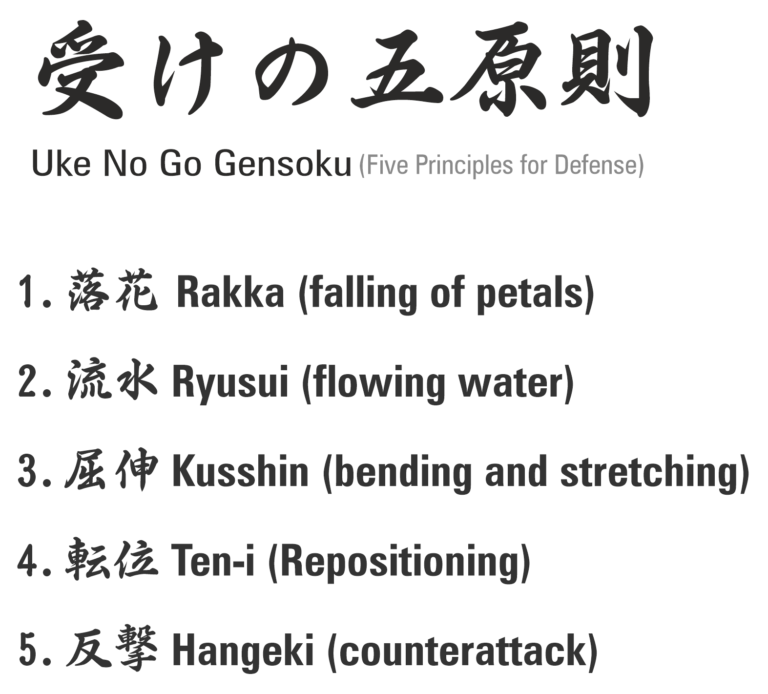
Section : Technical Insight Title: Uke No Go Gensoku 受けの五原則 | Five Principles for Defense
Uke No Go Gensoku 受けの五原則 | Five Principles for Defense
The Shito-Ryu karate system formalizes and emphasizes the five principles of defense, developed by Kenwa Mabuni, and known as Uke no go gensoku (受けの五原則):
- 落花 Rakka (falling of petals): Receiving the opponent’s attack with a strong counter-defensive technique by staying at the same place. The defensive technique should be so strong that if it were applied to the trunk of a tree then the tree would shed its leaves like falling petals.
e.g. You receive Chudan Tsuki at your set position with Yoko Uke or Yoko Uchi. - 流水Ryusui (flowing water): This is a way to redirect your opponent’s attack without breaking the flow of attack with no resistance. e.g., You receive Jyodan Tsuki with Sukui Uke, Nagashi Uke, or Kaishu Uke and change the attack’s direction.
- 屈伸Kusshin (bending and stretching): Deflecting the offense by moving in and out using your power of bending and stretching. e.g. You receive Chudan Tsuki by pulling back your body with the lower stance of Nekoashi dachi and counterattack by switching into Zenkutsu dachi.
- 転位Ten-i (Repositioning): This is a way to reposition yourself from the line of attack and switch in for a counter-attack. This is the technique of Repositioning. e.g., You can doge Jodan Tsuki by moving your face out to the left or right from the line of attack.
- 反撃Hangeki (counterattack): This is how to execute an offensive technique against your opponent’s attack. This is not the way of holding your body back.
e.g. Tsuki, Uke (Jodan and Chudan), Morote Tsuki, etc..




